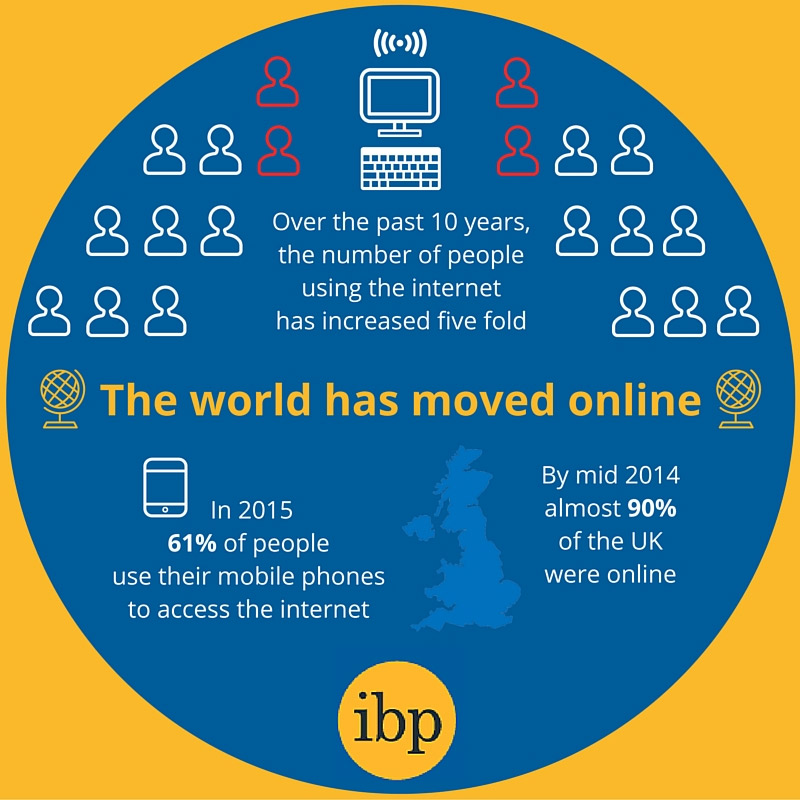IBP National Journalism Awards 2018 – Guidance Notes for Print Entries
CLICK HERE to Download a pdf file of this document
Annual National Journalism Awards 2018
The IBP Awards were established 45 years ago to encourage and reward excellence in journalism in the built environment. Over this period, it has also established a benchmark towards which ‘new’ journalists to the industry can aspire. Therefore, the judges should reflect this objective in their decision-making process.
Entries are being judged for the following award categories:
- Architecture Writer of the Year
- Construction/Infrastructure Journalist of the Year
- News Reporter of the Year
- Feature Writer of the Year
- Business Journalist of the Year
- Housing & Residential Property Writer of the Year
- ‘New’ Journalist of the Year
- Multi-Media Journalist of the Year
- Scoop of the Year
- Magazine of the Year (Weekly)
- Magazine of the Year (Non-weekly)
- Digital Service of the Year
- IBP Journalist of the Year
Conditions of Entry
The Awards are open to staff journalists and freelance writers.
Closing date for entries:
4.00pm Monday 17 September 2018
Entries to be sent to:
TBA
The Awards ceremony and dinner takes place on Thursday 29 November 2018 at the Four Seasons Hotel, Hamilton Place, Park Lane, London W1J 7DR.
Awards Presented by:
TBA
Awards Hosted by:
Peter Murray, Chairman, NLA
- Journalists may enter online as many categories as they wish, although the same articles cannot be submitted for more than one category. All articles should have been published in the twelve-month period ending 31 August 2018.
- Only one entry consisting of three articles is allowed per category, from each journalist.
- Each category pdf entry must be accompanied by a completed entry form and three different articles/news stories (a statement, if applicable) published in the year ending 31 August 2018. The articles included may have been published online or in print or both.
- PLEASE NOTE THAT EACH ONLINE ENTRY OF THREE ARTICLES MUST HAVE A COMPLETED ENTRY FORM AND A STATEMENT, WHERE APPLICABLE, INCLUDED IN THE ENTRY PDF.
- If the articles are not by-lined, confirmation of authorship from the editor should be included in the supporting material/statement as part of your total pdf entry.
- Please note all entries may be accompanied by an explanation, maximum 150 words for each article, maximum 450 words for the entry. Only those categories marked with an asterisk require a statement and are mandatory.
- All articles in each category must relate to the built environment.
- Articles published in house journals/newsletters etc are not eligible.
Group entries
- For any category (except the two Magazine of the Year categories) a portfolio of three articles by more than one journalist from one magazine or online platform may be submitted. Each article must be by-lined by two or more journalists and the names of at least two journalists must be common to not less than two articles, although not necessarily in the same combination.
Scoop of the Year
- This category is designed to reward an outstanding piece of journalism that broke news with a big impact within the built environment sector. Consideration will be given to the relative significance of the story and the journalist’s skill in obtaining the story and the information to support it. Stories can be broken on any platform – online, in print, or broadcast – and can be straight news stories or investigative features. Entrants will be expected to demonstrate proof of the story’s exclusivity in the form of speed to market compared with rival coverage.
Candidates should accompany their article with a completed entry form and a statement of up to 300 words explaining:
- The significance of the story to the publication’s readership.
- How the story was obtained, researched and developed
Candidates should also provide evidence of:
- The impact the story had on the built environment sector
- Follow up by rival media
- Speed to market relatives to those follow ups. This could be in the form of screen shots showing time and/or date of publication; credit for the story given in other dated publications; written explanations highlighting how the text of the story shows it to be an exclusive (for eg, direct, original quotes from an interviewee that were paraphrased in coverage elsewhere).
Construction/Infrastructure Writer of the Year
- Entries in his category can consist of news and/or features in construction, infrastructure, utilities, civil engineering and transportation sectors.
News Reporter of the Year*
- Entries for this category should be accompanied by an explanation of no more than 150 words for each article, 450 words in total for each entry, giving the background to the three articles submitted. For example, you may wish to explain that the story was an ‘exclusive’ or that the degree of research or teamwork required to produce the story was of particular merit.
Feature Writer of the Year*
- Entries for this category should be accompanied by an explanation of no more than 150 words for each article, a total of 450 words for each entry, outlining the three articles relevance to current issues in the construction/property industry. This category also allows for a series of articles (no more than three) on the same subject over two or more issues of a publication.
Business Writer of the Year*
- This category is applicable to any aspect of the built environment, be that in print or on a digital platform. The award particularly seeks to recognize journalists writing business or financial stories about the built environment. The judges will be seeking meaningful articles which clearly demonstrate overall understanding of the sector, subject, and the needs of their readers, as well as sound commercial results.
Housing & Residential Property Journalist of the Year
- This category seeks to recognize journalists writing about the process of all forms of housing development including policy, land, design and reconstruction and/or sales, marketing and management issues for all forms of residential property.
- The category also seeks to explore and capture all aspects of the energy debate in both new and existing housing stock designed, built and refurbished in the UK. You can submit articles on a mix of subjects or three articles on either housing or residential property topics.
‘New’Journalist of the Year
- Journalists entering this category should have no more that two years experience in the sectors covered by the Awards to the year ending 31 August 2018, (verified by a letter from your editor, included in your online pdf), entries should demonstrate good research, investigative style and bold subjects’ representative of the built environment across all the Award categories.
Magazine of the Year
- The Magazine Award categories (both weekly and non-weekly) seek to recognize the importance of editorial team effort in producing high quality publications for every sector of the construction, property and architecture industries, during the year ending 31 August 2018. Commercial and membership subscription magazines are eligible for both magazine categories.
- The weekly and non-weekly categories specifically encourage entries from specialist publications which
- are published weekly (weekly category only) monthly, quarterly or produced 6 or 10 times (non-weekly category only) during the year ending 31 August 2018.
- In both categories, the editor should include a statement clearly outlining why he/she believes the magazine has substantially covered the market sector during the year ending 31 August 2018 with investigative reporting, features and news stories.
- To support the above the editor should select any three issues, (four copies of each issue) covering the period year ending 31 August 2018 which should demonstrate use of research, choice of subject, photography, design and layout.
IBP Journalist of the Year
- This Award will be judged from the winning entries in the individual Journalist/Writer of the Year categories (1 to 8 inclusive).
- The judges’ decisions are final
- There is a single winner in each category
- Judges should make up to six nominations in each category, if the entry rate allows
- Nominated journalists from whom the winner will be announced at the Awards dinner should make every effort to attend, as the guest of the category host, or be represented
- All journalists that enter the awards will be invited to attend the Awards Presentation as IBP’s guest
- No correspondence will be entered into on the judging process or the judge’s decisions
These details are correct at the time of circulation and are subject to change
July 18 2018
CLICK HERE to Download a pdf file of this document
Annual National Journalism Awards 2018
The IBP Awards were established 45 years ago to encourage and reward excellence in journalism in the built environment. Over this period, it has also established a benchmark towards which ‘new’ journalists to the industry can aspire. Therefore, the judges should reflect this objective in their decision-making process.
Entries are being judged for the following award categories:
- Architecture Writer of the Year
- Construction/Infrastructure Journalist of the Year
- News Reporter of the Year
- Feature Writer of the Year
- Business Journalist of the Year
- Housing & Residential Property Writer of the Year
- ‘New’ Journalist of the Year
- Multi-Media Journalist of the Year
- Scoop of the Year
- Magazine of the Year (Weekly)
- Magazine of the Year (Non-weekly)
- Digital Service of the Year
- IBP Journalist of the Year
Conditions of Entry
The Awards are open to staff journalists and freelance writers.
| Closing date for entries: | 4.00pm Monday 17 September 2018 |
| Entries to be sent to: | TBA |
| The Awards ceremony and dinner takes place on Thursday 29 November 2018 at the Four Seasons Hotel, Hamilton Place, Park Lane, London W1J 7DR. | |
| Awards Presented by: | TBA |
| Awards Hosted by: | Peter Murray, Chairman, NLA |
- Journalists may enter online as many categories as they wish, although the same articles cannot be submitted for more than one category. All articles should have been published in the twelve-month period ending 31 August 2018.
- Only one entry consisting of three articles is allowed per category, from each journalist.
- Each category pdf entry must be accompanied by a completed entry form and three different articles/news stories (a statement, if applicable) published in the year ending 31 August 2018. The articles included may have been published online or in print or both.
- PLEASE NOTE THAT EACH ONLINE ENTRY OF THREE ARTICLES MUST HAVE A COMPLETED ENTRY FORM AND A STATEMENT, WHERE APPLICABLE, INCLUDED IN THE ENTRY PDF.
- If the articles are not by-lined, confirmation of authorship from the editor should be included in the supporting material/statement as part of your total pdf entry.
- Please note all entries may be accompanied by an explanation, maximum 150 words for each article, maximum 450 words for the entry. Only those categories marked with an asterisk require a statement and are mandatory.
- All articles in each category must relate to the built environment.
- Articles published in house journals/newsletters etc are not eligible.
Group entries
- For any category (except the two Magazine of the Year categories) a portfolio of three articles by more than one journalist from one magazine or online platform may be submitted. Each article must be by-lined by two or more journalists and the names of at least two journalists must be common to not less than two articles, although not necessarily in the same combination.
Scoop of the Year
- This category is designed to reward an outstanding piece of journalism that broke news with a big impact within the built environment sector. Consideration will be given to the relative significance of the story and the journalist’s skill in obtaining the story and the information to support it. Stories can be broken on any platform – online, in print, or broadcast – and can be straight news stories or investigative features. Entrants will be expected to demonstrate proof of the story’s exclusivity in the form of speed to market compared with rival coverage.
Candidates should accompany their article with a completed entry form and a statement of up to 300 words explaining:
- The significance of the story to the publication’s readership.
- How the story was obtained, researched and developed
Candidates should also provide evidence of:
- The impact the story had on the built environment sector
- Follow up by rival media
- Speed to market relatives to those follow ups. This could be in the form of screen shots showing time and/or date of publication; credit for the story given in other dated publications; written explanations highlighting how the text of the story shows it to be an exclusive (for eg, direct, original quotes from an interviewee that were paraphrased in coverage elsewhere).
Construction/Infrastructure Writer of the Year
- Entries in his category can consist of news and/or features in construction, infrastructure, utilities, civil engineering and transportation sectors.
News Reporter of the Year*
- Entries for this category should be accompanied by an explanation of no more than 150 words for each article, 450 words in total for each entry, giving the background to the three articles submitted. For example, you may wish to explain that the story was an ‘exclusive’ or that the degree of research or teamwork required to produce the story was of particular merit.
Feature Writer of the Year*
- Entries for this category should be accompanied by an explanation of no more than 150 words for each article, a total of 450 words for each entry, outlining the three articles relevance to current issues in the construction/property industry. This category also allows for a series of articles (no more than three) on the same subject over two or more issues of a publication.
Business Writer of the Year*
- This category is applicable to any aspect of the built environment, be that in print or on a digital platform. The award particularly seeks to recognize journalists writing business or financial stories about the built environment. The judges will be seeking meaningful articles which clearly demonstrate overall understanding of the sector, subject, and the needs of their readers, as well as sound commercial results.
Housing & Residential Property Journalist of the Year
- This category seeks to recognize journalists writing about the process of all forms of housing development including policy, land, design and reconstruction and/or sales, marketing and management issues for all forms of residential property.
- The category also seeks to explore and capture all aspects of the energy debate in both new and existing housing stock designed, built and refurbished in the UK. You can submit articles on a mix of subjects or three articles on either housing or residential property topics.
‘New’Journalist of the Year
- Journalists entering this category should have no more that two years experience in the sectors covered by the Awards to the year ending 31 August 2018, (verified by a letter from your editor, included in your online pdf), entries should demonstrate good research, investigative style and bold subjects’ representative of the built environment across all the Award categories.
Magazine of the Year
- The Magazine Award categories (both weekly and non-weekly) seek to recognize the importance of editorial team effort in producing high quality publications for every sector of the construction, property and architecture industries, during the year ending 31 August 2018. Commercial and membership subscription magazines are eligible for both magazine categories.
- The weekly and non-weekly categories specifically encourage entries from specialist publications which
- are published weekly (weekly category only) monthly, quarterly or produced 6 or 10 times (non-weekly category only) during the year ending 31 August 2018.
- In both categories, the editor should include a statement clearly outlining why he/she believes the magazine has substantially covered the market sector during the year ending 31 August 2018 with investigative reporting, features and news stories.
- To support the above the editor should select any three issues, (four copies of each issue) covering the period year ending 31 August 2018 which should demonstrate use of research, choice of subject, photography, design and layout.
IBP Journalist of the Year
- This Award will be judged from the winning entries in the individual Journalist/Writer of the Year categories (1 to 8 inclusive).
- The judges’ decisions are final
- There is a single winner in each category
- Judges should make up to six nominations in each category, if the entry rate allows
- Nominated journalists from whom the winner will be announced at the Awards dinner should make every effort to attend, as the guest of the category host, or be represented
- All journalists that enter the awards will be invited to attend the Awards Presentation as IBP’s guest
- No correspondence will be entered into on the judging process or the judge’s decisions
These details are correct at the time of circulation and are subject to change
July 18 2018






